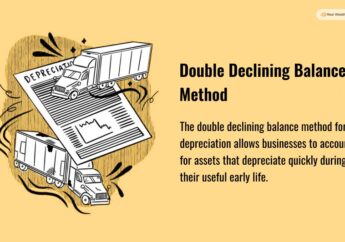Everything You Should Know About Federal Tax Calculator
by Sumona Finance Published on: 10 September 2022 Last Updated on: 03 November 2022

Calculating the total amount you owe the IRS is not easy when the money isn’t automatically withheld from your paycheck. Failure to pay the federal tax on time can result in an underpayment penalty.
The worst part is that most freelancers tend to overpay the taxes, as they skip many deductions they are not aware of. That’s why it’s important to keep yourself up-to-date with the current federal tax laws and include all the deductibles before filing your income tax returns.
Federal taxes are quite complex, especially if you choose itemized deductions. You need to understand the current regulations regarding the allowed itemized expenses, the last filing date, rules on requesting an extension, and different methods for calculating your tax returns.
In this post, we are going to walk you through the details of the federal tax, when it’s supposed to be paid, how much you have to pay, and how to calculate the dues effectively. Keep reading.
What is Federal Tax? When and Who Needs to File it?

The largest source of revenue for the American government is the federal tax that every individual whose income exceeds the minimum threshold must pay.
Self-employed individuals calculate and pay the tax from their earnings either quarterly or annually. Those who work for an employer don’t have to worry about the tax calculation part, as their income tax is automatically withheld from their paycheck.
They are issued a W-2 form, which states the total amount withheld for the income tax.
The tax rate depends on your annual income, sources of income, expenses, and other factors. Although the rates can be as high as 37% of your annual salary, you can lower the taxable amount by claiming tax deductions and credits.
You can seek the help of a professional who can explain the latest deductibles and current laws around income tax.
However, if you want to save money, you can use the software to simplify calculations. The federal tax calculator is one such advanced software app that helps you calculate your taxable income for the calendar year and the total amount you owe after deducting the necessary expenses.
Calculate Income Tax Rates

As mentioned before, the United States has a tax system that deducts a certain percentage of the tax from your quarterly or annual income, depending on your tax bracket. The higher your income, the higher the percentage of the tax charged.
Before calculating your due tax, you must look at the income bracket and the associated tax percentage. The tax brackets also vary depending on your filing status. It’s different for singles and married taxpayers. Likewise, the rate is different for the head of the family.
Now, your income for the year is the adjusted gross income. The tax percentage is not applied to this figure. You are rather supposed to deduct the expenses to arrive at the net taxable income. That’s the most difficult part of calculating your income tax.
Deductions and Tax Credits: How do They Work?

To calculate estimated taxable income, you need to subtract the allowed deductions from the adjusted gross income. Then, you need to use the tax bracket that matches your filing status.
Estimated tax, as the name suggests, is based on the estimated annual income, which may or may not be accurate. As long as you don’t underpay the tax for the previous year, you don’t have to worry about the penalty. Overpayment is not a concern, as you will get a tax refund if your estimated tax payment turns out to be more than what you owe.
The tax credit is the fixed dollar amount that’s deducted from your tax bill. Unlike tax deductions, the credit amount is subtracted from your tax bill. For instance, if you get a tax credit of $1000 and the tax you owe is $1200, you will have to pay $200 after subtracting the credit.
Very few people are eligible for the tax credit. These are refundable, too. This means if you are eligible for a tax credit but don’t owe anything to the IRS, you will still get a refund. People who install an energy-efficient system, pay foreign taxes and insurance premiums, and adopt a child will be eligible for a tax credit.
The deduction is applied to the taxable income. It lowers your taxable income so that your tax bill is reduced significantly. You can take the standard deduction and subtract a fixed dollar amount from your income. Itemized deduction is another option for those with multiple expenses.
If you itemize your deductions, you must fill out Schedule A. The form has a list of the deductible expenses. Before you choose a deduction method, compare the amounts you can save on both methods. Remember, a standard deduction can save you more than if you itemize them and vice versa.
To simplify the calculation, you can use the federal tax calculator. This tool will help you deduct expenses and calculate your net income effectively.
Should You Take a Standard Deduction, or is Itemizing a Better Choice?

People often face difficulty choosing between a standard and an itemized deduction. Itemizing your deduction makes sense only when your expenses exceed the amount you can subtract from the standard deduction.
The IRS announces a standard deduction rate yearly, depending on inflation and other factors. It is fixed no matter your expenses.
For 2022, it was $12,950 for singles and $25,900 for married couples filing their income tax returns jointly. This means regardless of your expenses for the year, you can subtract your income by $12,950. The standard deduction rate has almost doubled since the Tax Cuts and Jobs Act was enacted in 2018.
So, it makes sense for most individual taxpayers to consider standard deductions. It’s straightforward and cost-effective. The standard deduction can save you a lot in your annual tax returns if you don’t have many expenses.
Itemized deductions, on the other hand, are comparatively complex. You need to list every expense and keep the receipt of each. These receipts are used as proof of your spending in case the IRS audits you. That being said, the itemized deduction doesn’t have a maximum limit up to which you can deduct your taxable income. It all comes down to your expenses for the year.
Tax Deductions for 2022

For federal income tax return, here are a few deductibles you are allowed:
- Mortgage interest (if it’s lower than $750,000)
- State and local taxes (up to $10,000)
- Medical expenses that are above 7.5% of your adjusted gross income
- Losses on gambling or investment
- Home office expenses and other self-employment expenses
Most of these expenses are listed on Schedule A, which must be filed with Form 1040. However, there are a few exceptions.
For example, losses you have incurred on investment must be reported on Form 8949, and the IRA contributions must be listed on form 5498. For charitable contributions, you are allowed a deduction up to $300, only if you choose to itemize your deductions.
As mentioned earlier, many deductions were removed from the “allowed itemized deduction” list in 2018 due to the Tax Cuts and Jobs Act. If you have difficulty calculating the deductions, you can use the federal tax calculator to make it easier.
How to Calculate Your Tax Refund?

Whether you are eligible for a tax refund or not depends on how much you paid in the federal tax for the calendar year. It also depends on whether you have any tax credits.
If the amount that your employer withheld from your income tax is higher than the actual tax you owe, the balance will be credited to your account by the end of the year.
As mentioned before, even if you haven’t paid any tax but are eligible for a tax credit, you will get a refund up to the credit amount. You can use the IRS income tax calculator to get a clear picture of the refund amount you are eligible for.
File Your Tax on Time

The Internal Revenue Service (IRS) is quite strict about the deadline by which each taxpayer must file and pay their income tax.
Failure to file and pay your tax will lead to underpayment penalties and an interest that keeps increasing. Note that the sooner you clear your dues, the lesser you will owe. If you are unable to pay the income tax due to certain circumstances, make sure you request an extension.
The IRS will grant you more time to file and pay the dues. The early filing doesn’t only remove penalties or interest, but it keeps your credit score stable. If you don’t want to lose a tax refund or lower your credit score, it’s important that you file your federal tax on time.
You can take the help of a professional tax accountant to understand multiple deductions, tax credits, and refunds. If that doesn’t seem viable, you can always use tax prep software or a federal tax calculator.
Additionals:







































































































